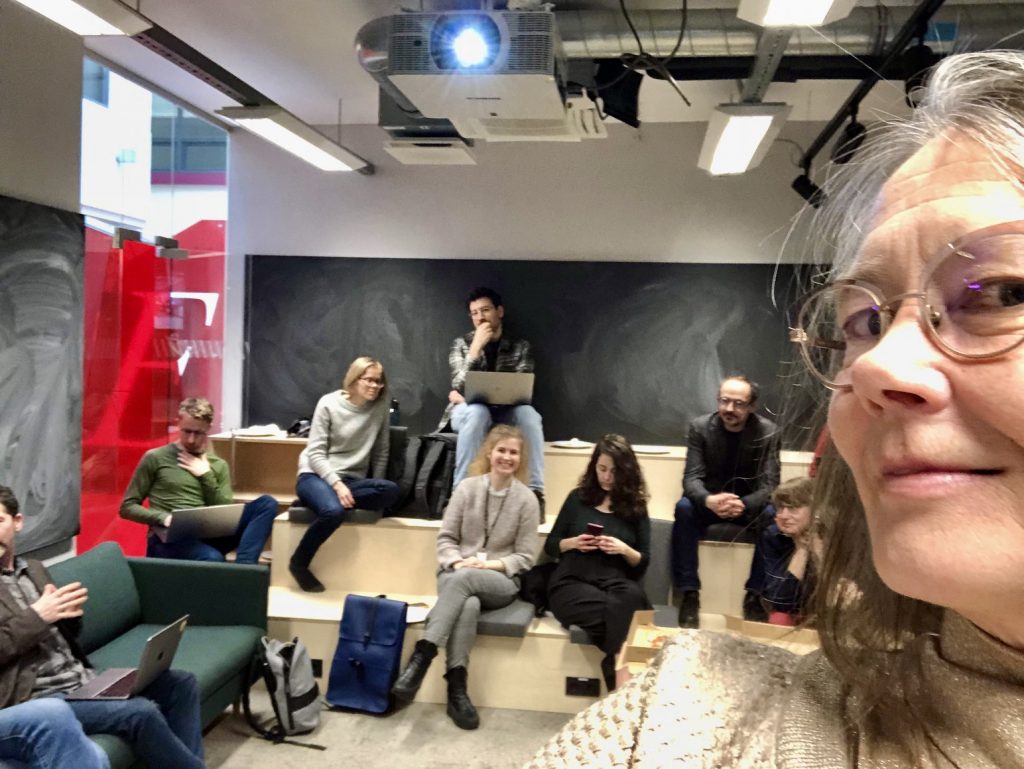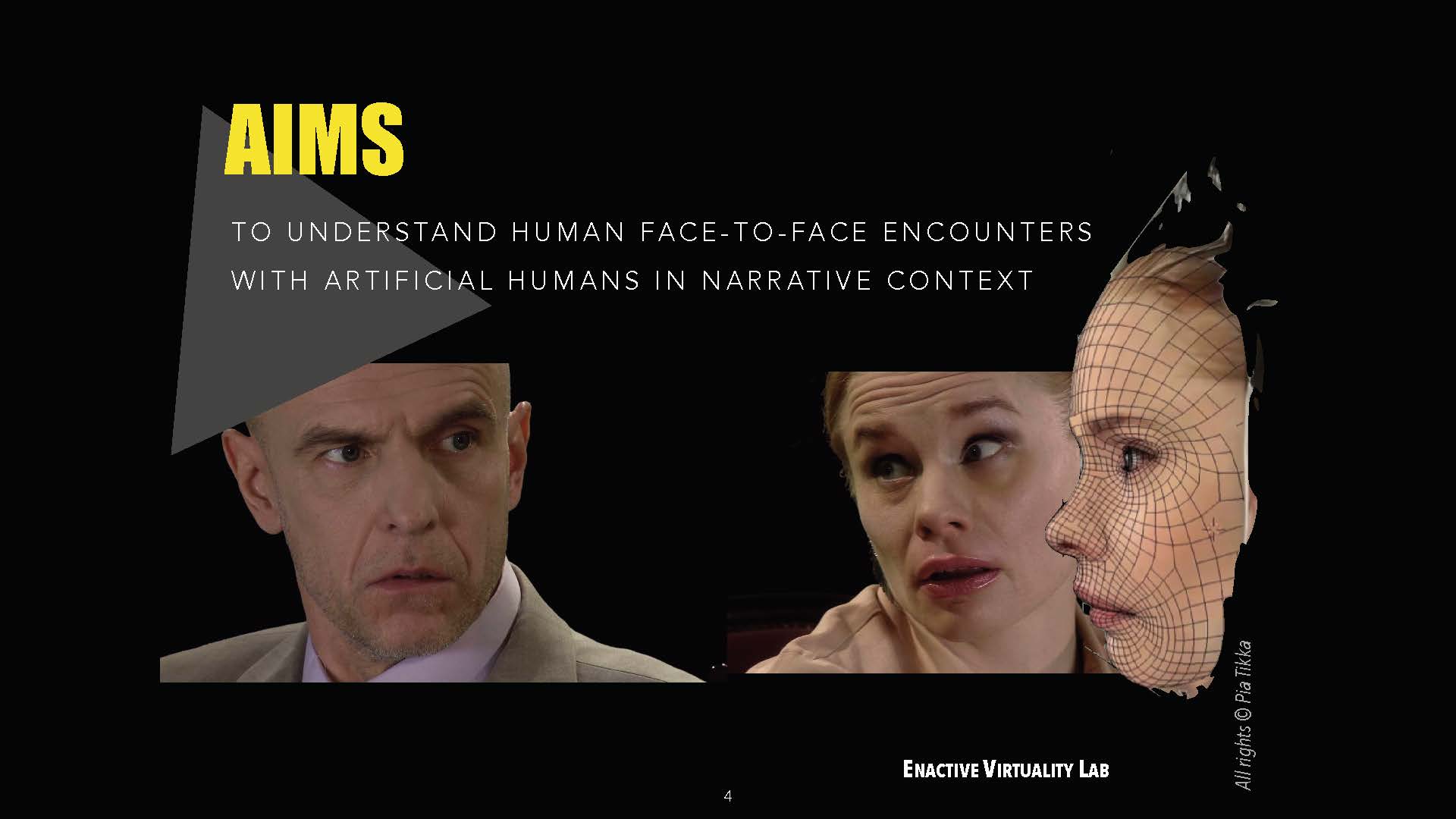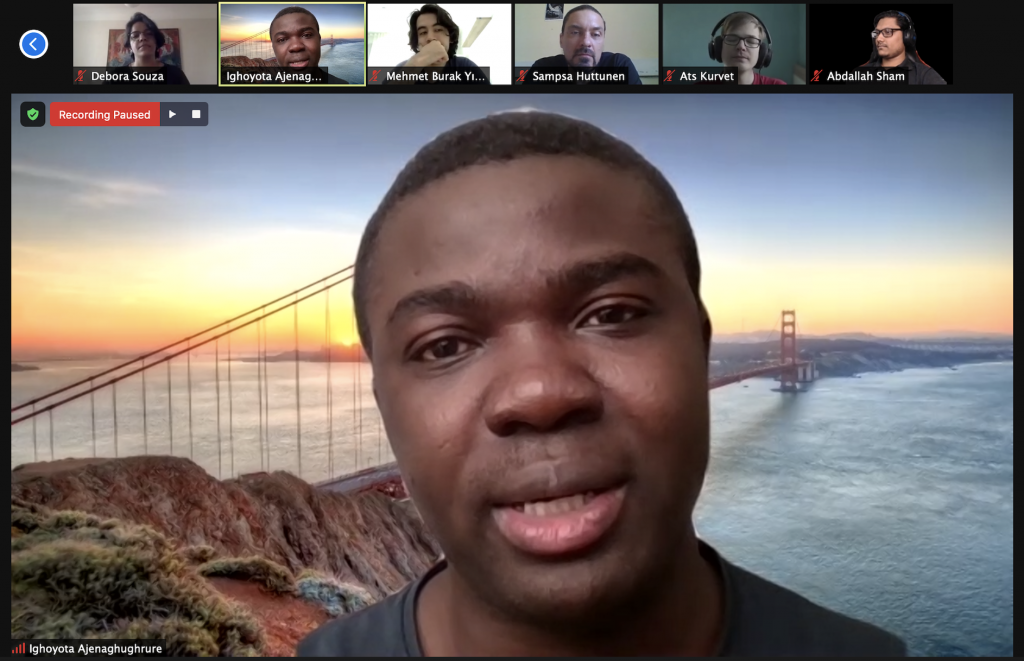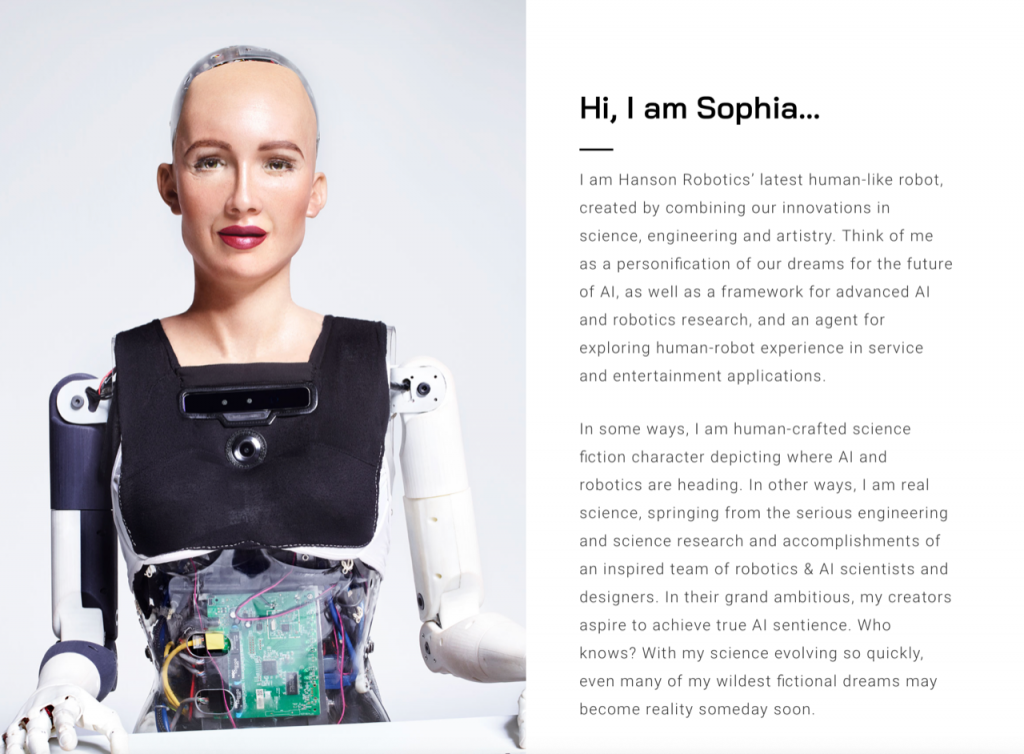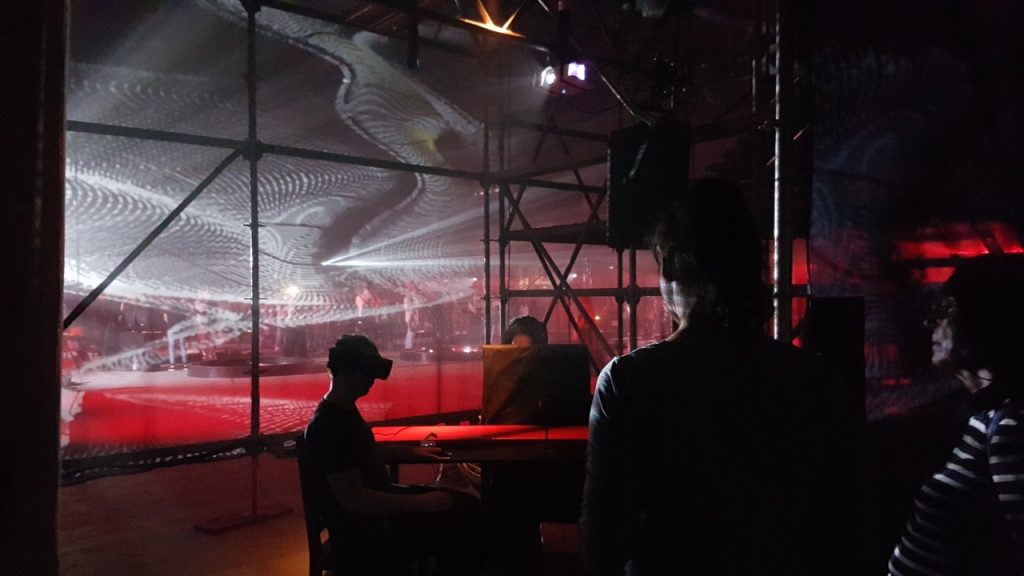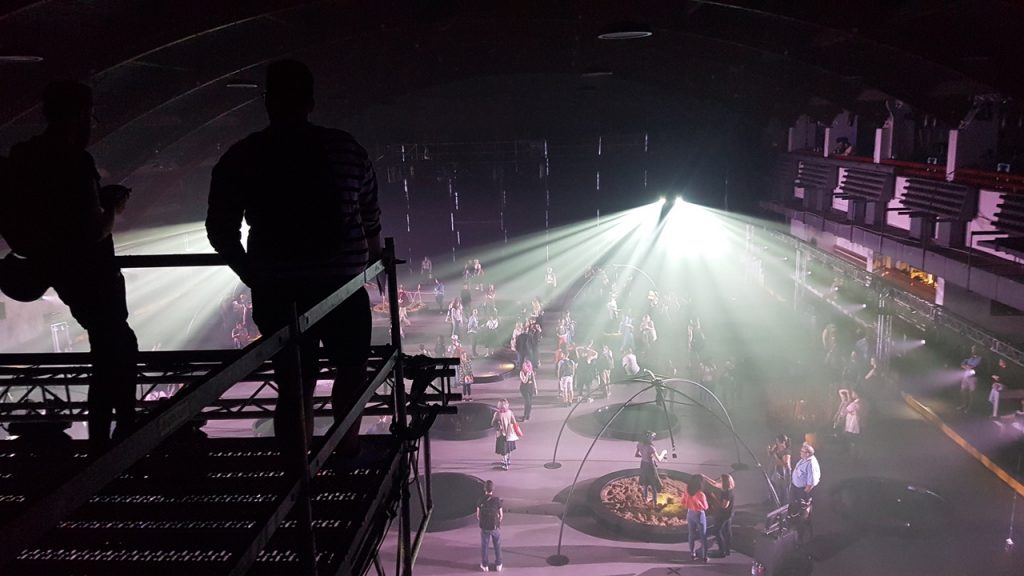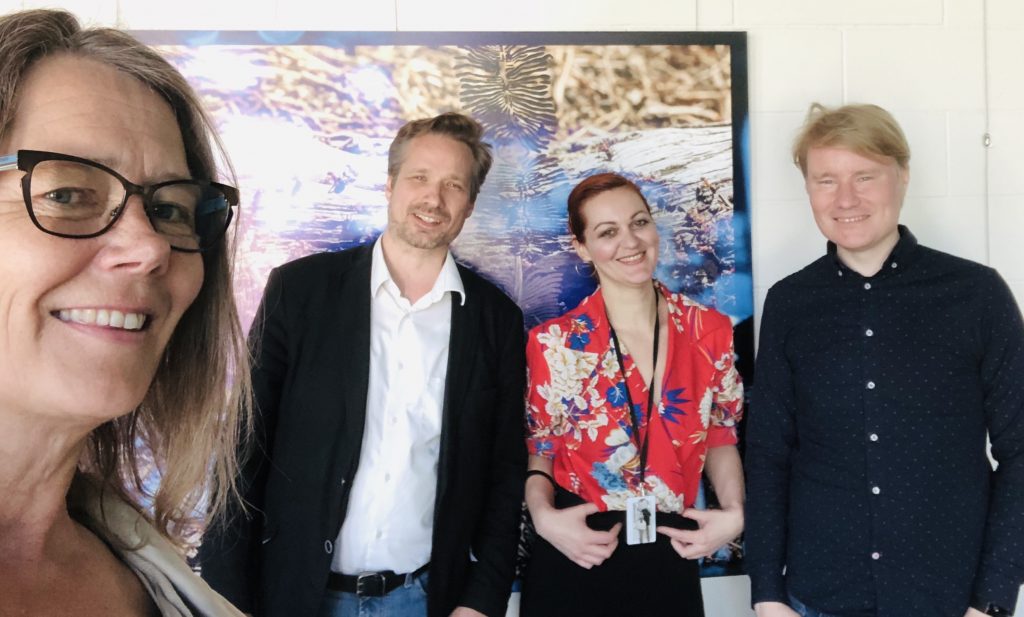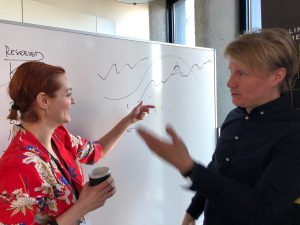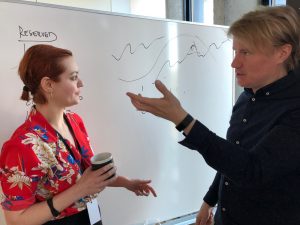Call for NEUROCINEMATIC papers – Baltic Screen Media Review, Special Issue 2023
Cinematic minds in making – Investigation of subjective and intersubjective experiences of storytelling
Guest editors Pia Tikka and Elen Lotman with Maarten Coëgnarts
Contact and submission to NeuroCineBFM@tlu.ee
One of the key foundations of everyday activities in society is intersubjectively shared communication between people. Stories, films, and other audiovisual narratives promote shared understanding of possible situations in other people’s lives. Narratives expose complex social situations with their ethical, political, and cultural contexts (Hjort and Nannicelli, 2022). They also play a role for the human kind as a means to learn from protagonists and their positive examples and successes, but also their mistakes, false motivations, and blinded desires that may lead to dramatic situations, sometimes even disasters. An exhaustive range of contextual situatedness as the constitutive essence in narratives does not only serve entertainment and education, but also scientific studies of human mind and behavior.
Since the beginning of this millennium, narratives mediated by films have allowed researchers to simulate complex socio-emotional events in behavioral and neuroimaging laboratories, accumulating new insights to the human behavior, emotion, and memory, to name a few of many topics. The proponents of the so-called naturalistic neuroscience and, in particular its subfield neurocinematics (Hasson et al. 2008) have shown how experiencing naturally unfolding events evokes synchronized activations in the large-scale brain networks across different test participants (see, Jaaskelainen et al. 2021, for review). The tightly framed contextual settings in cinematic narratives have opened a fresh window for researchers interested in understanding linkages between individual subjective experiences and intersubjectively shared experiences.
So far, neurocinematic studies have nearly exclusively focused on mapping the correlations between narrative events and observed physiological behaviors of uninitiated test participants.. The knowledge accumulated so far does not tell much of the affective or cognitive functions of the experts of audiovisual storytelling, with few exceptions (e.g. deBorst et al 2016; Andreu-Sánchez et al. 2021). Along with this Special Issue we want to extend the scope of studies to the embodied cognitive processes of storytellers themselves. As an example, consider the term “experiential heuristics” proposed by cinematographer ELen Lotman (2021) to describe the practice-based knowledge accumulation by cinematographers, or the embodied dynamics of the filmmaker in the process of simulating the experiences of the fictional protagonists and/or that of imagined viewers described as “enactive authorship”(Tikka 2022). Another question that merits further understanding is how the embodied decision-making processes of filmmakers further lead to the creation of dynamic embodied structures in the cinematic form. Appealing to the shared embodiment of both the filmmaker and the film viewer, these pre-conceptual patterns of bodily experience or “image schemas” have been argued to play a significant expressive role in the representation and communication of meaning in cinema (Coëgnarts 2019).
We call for papers that focus on the creative experiential processes of the filmmakers, storytelling experts and their audience. We encourage the proposed papers to discuss how temporally unfolding of contextual situatedness depicted in narratives manifests in reported subjective experiences, the observed body-brain behaviors, and time-locked content descriptions.
TOPICS
We invite boldly multidisciplinary papers to contribute with theoretical, conceptual and practical approaches to the experiential nature of filmmaking and viewing. They may draw, for instance, from social and cognitive sciences, psychophysiology, neurosciences, ecological psychology, affective computing, cognitive semantics, aesthetics, or empirical phenomenology.
Accordingly, we encourage papers that discuss the relations of data from these approaches, all concerning film experience of the film professionals and/or film viewers. The focus of a submission may also focus on a specific expertise, for example that of the writer, editor, cinematographer, scenographer or sound designer. The papers may describe, for example 1) subjective experiences, 2) intersubjectively shared experiences; 3) context or content annotation, 4) semantic description; 5) first-person phenomenal description, and/or 6) physiological observation (e.g. neuroimaging, eye-tracking, psychophysiological measures).
Contributions addressing topics such as (but not limited to) the following are particularly welcome:
- Social cognition and embodied intersubjectivity
- Interdisciplinary challenges for methods; annotations linking cinematic features to physiological data
- First-and second-person methodologies; empirical phenomenological observations
- Embodied enactive mind, embodied simulation, and theory of theory mind
- Embodied metaphors in film; embodied film style; bodily basis of shared film language; semantics;
- Cinematic empathy; emotions; simulation of character experiences
- Audience engagement; immersion; cognitive identification;
- Temporality of experiences; context-dependent memory coding; story reconstruction; narrative comprehension;
- Experiential heuristics; multisensory and tacit knowledge;
- Storytelling strategies, aesthetics, fIlm and media literacy; genre conventions
GUIDELINES
We will accept long research articles (4000 – 8000 words w/o ref) and short articles and commentaries (2000 – 2500 words w/o ref). Submitted papers need to follow Submission guidelines
All submissions should be sent via email attachment to Guest editors at NeuroCineBFM@tlu.ee
BSMR embraces visual storytelling, we thus invite authors to use photos and other illustrations as part of their contributions. See Journal info https://sciendo.com/journal/BSMR
Key dates
01.04.2023 – Submit abstracts of 200–300 words.
10.04.2023 –Acceptance of abstracts
30.06.2023 –Submit full manuscripts for blind peer review
20.09.2023 –Resubmit revisions
31.12.2023 –Special Issue published online
This issue of BSMR will be published both online and in print in December 2023.
All submissions should be sent via email attachment to Guest editors at NeuroCineBFM@tlu.ee
Guest editors
Maarten Coëgnarts https://www.filmeu.eu/alliance/people/maarten-coegnarts
Elen Lotman https://www.filmeu.eu/alliance/people/elen-lotman
Pia Tikka https://www.etis.ee/CV/Pia_Tikka/eng
References
Andreu-Sánchez, C., Martín-Pascual, M.A., Gruart, A. and Delgado-García, J.M. (2021). The effect of media professionalization on cognitive neurodynamics during audiovisual cuts. Frontiers in Systems Neuroscience, 15: 598383. doi: https://doi.org/10.3389/fnsys.2021.598383
de Borst, A. W., Valente, G., Jääskeläinen, I. P., & Tikka, P. (2016). Brain-based decoding of mentally imagined film clips and sounds reveals experience-based information patterns in film professionals. NeuroImage, 129, 428–438. https://doi.org/10.1016/j.neuroimage.2016.01.043
Hasson, U., Landesman, O., Knappmeyer, B. Vallines, I., Rubin, N., & Heeger, D. (2008). Neurocinematics: The Neuroscience of Film. Projections, 2, 1–26. https://doi.org/10.3167/proj.2008.020102.
Hjort, M and Nannicelli, T. (Ed.).(2022) The Wiley Blackwell Companion to Motion Pictures and Public Value. Wiley-Blackwell Press.
Jääskeläinen, I. P., Sams, M., Glerean, E., & Ahveninen, J. (2021). Movies and narratives as naturalistic stimuli in neuroimaging. NeuroImage, 224, 117445. https://doi.org/10.1016/j.neuroimage.2020.117445
Lotman, E. (2021) Experiential heuristics of fiction film cinematography. PhD Diss. Tallinn University.
Tikka, Pia (2022). Enactive Authorship Second-Order Simulation of the Viewer Experience— A Neurocinematic Approach. Projections: the Journal for Movies & Mind, 16 (1), 47−66. DOI: 10.3167/proj.2022.160104.
